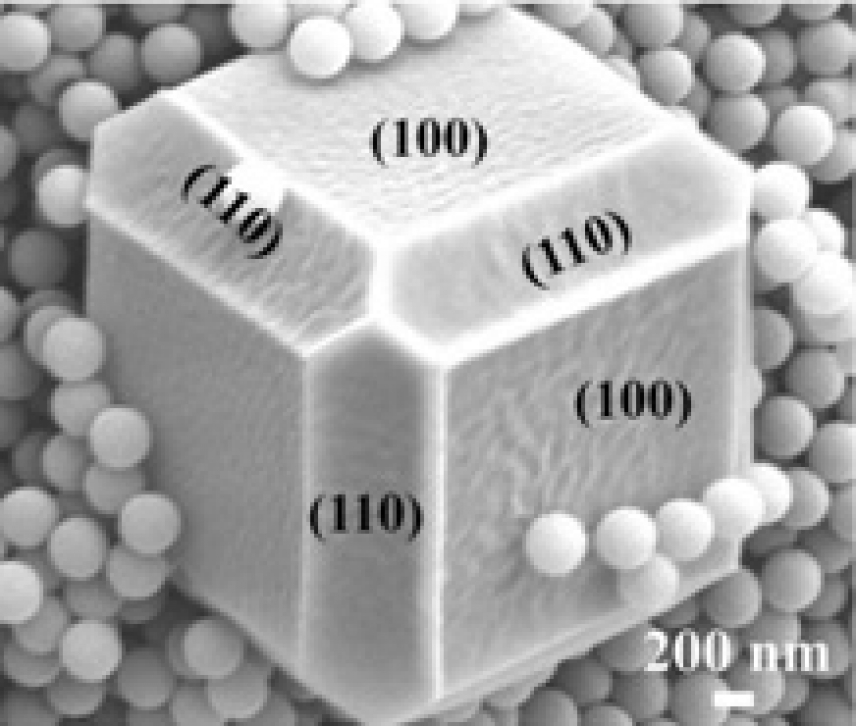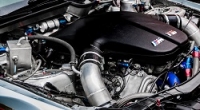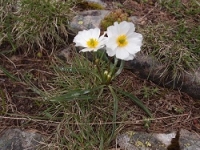A new system is designed that improves the quality of frozen horse spers
Escrito por UCC+iThe method reduces ice crystals that form during cryopreservation and affect spermatozoon structure
Cryopreservation is a freezing method that stores spermatozoa to be used for reproduction. Although it is a widespread process, its main issue is the ice formation that occurs during said process, which ends up affecting sperm structure and quality. In order to diminish this harm, usually permeable cryoprotectants are used, which are substances that penetrate tissues and act inside cells in order to stop ice crystals from forming when temperatures go down.
Porous materials make it possible to have nanotechnology under control
Escrito por UCC+iA University of Cordoba research team is able to stabilize different metallic nanostructures by encapsulating them in porous monocrystalline materials
Half metal, half organic structure, like Robocop himself, is the material known as MOF, short for Metal Organic Framework. MOF has been developed by scientists and applied to a myriad of products from sorbents to batteries for electronic devices. This material emerged from the nanotechnology revolution that turned material design upside down and facilitated the improvement of chemical processes. MOFs are a new organic and inorganic hybrid material made up of metallic nodes and organic links characterized by their porosity, that is to say, by the intermolecular spaces that it is comprised of.
Artificial intelligence combats the noise from diesel engines
Escrito por UCC+iSeveral University of Cordoba research teams have created a new system to predict the sound from these engines depending on the chemical physical composition of the biofuel
For years now, diesel engines have been one of the greatest competitors in the car industry. In spite of their advantages such as durability and affordability, one of their weaknesses continues to be the noise they produce. Now, a new model, designed by several University of Cordoba research groups, allows for predicting this noise depending on the chemical physical composition of the biofuel that powers the engine.
Being asexual in the Alps is an evolutionary advantage for survival
Escrito por UCC+iAn international team explains why specimens of an Alpine flower that reproduce without fertilization are more widespread than their sexually reproducing counterparts
At between 5 and 20 centimeters long, it has white flowers and is the Alpine version of the yellow-flowering Mediterranean buttercup. Ranunculus kuepferi, though fragile in appearance, is one of the plant species that has best adapted to extreme conditions, such as high mountain climate. For thousands of years now, these flowers have decorated the valleys of Europe’s tallest mountains, which are home to more than 30,000 wild species. Learning how this plant adapted and survived could help better understand how living beings respond to changes on Earth. In the case of Alpine buttercups, the key seems to be found in how they reproduce, according to a research project carried out by an international team which included University of Cordoba Botany Professor Diego Nieto Lugilde.
A biochemical process in plants is imitated to curb the reproduction of colon cancer tumor cells
Escrito por UCC+iA University of Cordoba research team has developed a tool to erase molecular tags that silence genes involved in tumor growth
Plants have provided a new avenue in curbing tumor growth. On this occasion, it doesn’t involve miracle species or the like, but rather the results obtained by the University of Cordoba BIO301 research team called "Epigenetics and DNA Repair." This research team is affiliated with the Maimonides Institute of Biomedical Research and is led by Genetics Professor María Teresa Roldán Arjona.
Comments on social networks also reinforce socialization during adolescence
Escrito por UCC+iWithout overlooking the risks of using social networks in adolescence, a study analyzes little known information about cybergossiping among high school students
Cybergossiping occurs when two or more people make evaluative comments on a digitial device about a third person who is not present. This kind of online behavior is common among adolescents when they are instant messaging and on social networking sites. Cybergossiping directly impacts the group, and can just as easily foster as damage the quality of the relationships among its members.







